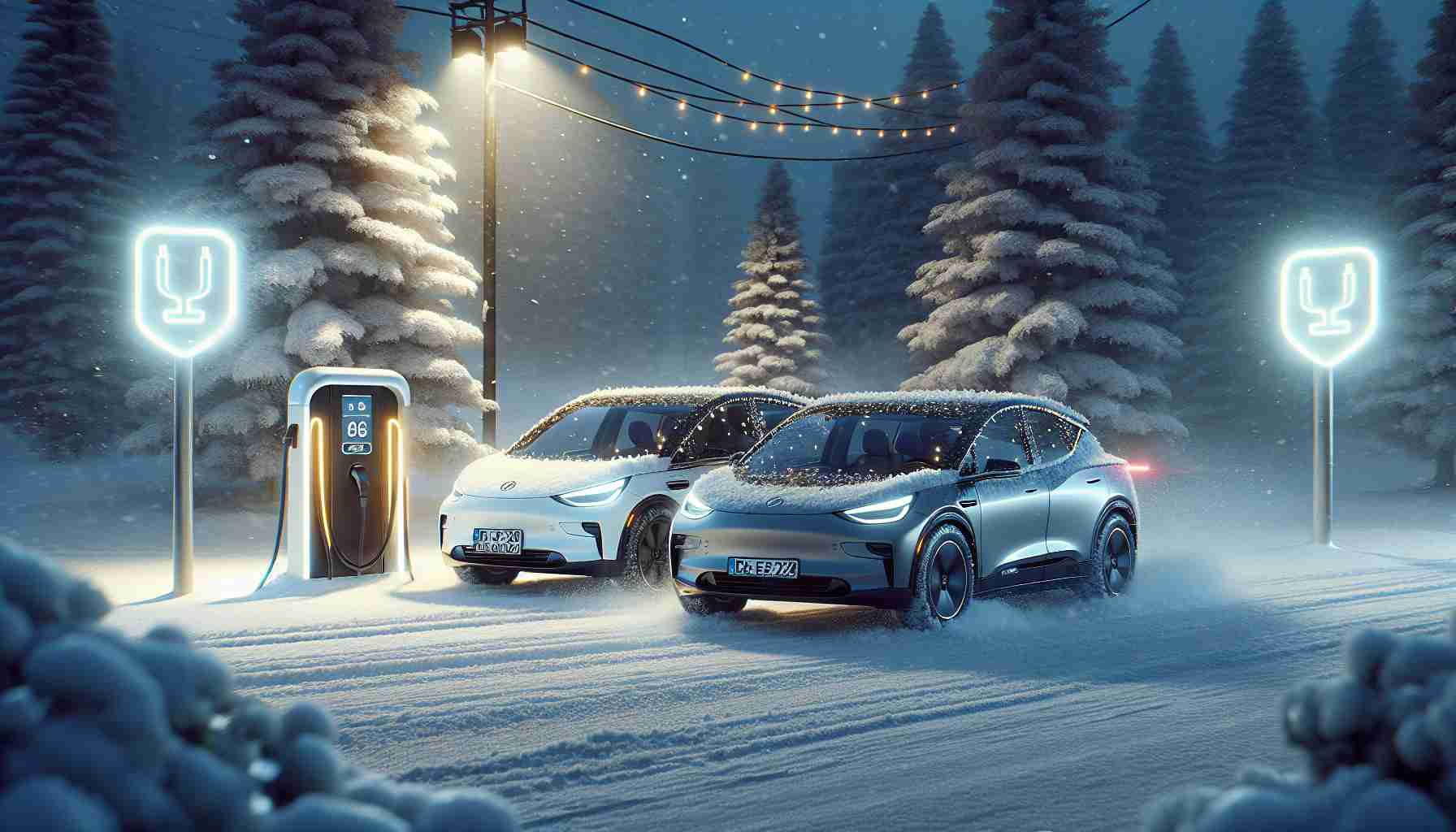As winter temperatures bring chilly winds and snow, electric vehicle (EV) owners may face some challenges. However, it’s important to put these issues into perspective. EVs are affected by cold weather, as Forbes previously noted, with slower charging, reduced efficiency, and a decrease in range due to the impact on the batteries and electric functions such as heating. But this is not breaking news. It’s a well-known aspect of EV ownership.
While it’s crucial for prospective buyers to understand these limitations, it’s also important to consider the bigger picture. The climate crisis is an urgent matter that affects every aspect of society. Last year was the warmest year on record, highlighting the need to reduce carbon emissions and pollutants. EVs offer a tangible solution to this problem, even with the challenges they face in cold weather.
One EV owner, Darren Van Cleave, shared his perspective on social media, stating, „We switched to electric cars specifically for cold weather!” Van Cleave resides in Utah, where cold weather often leads to poor air quality due to valley inversions and trapped pollutants. Many of the most polluted cities in the United States are located in colder regions. By making the switch to EVs, individuals can actively contribute to reducing pollution levels and improving air quality in their communities.
Infrastructure upgrades are also underway to address the challenges of cold weather EV usage. The recent $1 trillion infrastructure law in the United States includes funding to establish a network of chargers every fifty miles on interstates and busy highways. These enhancements will undoubtedly alleviate some of the concerns surrounding EV charging during cold weather conditions.
Furthermore, there are steps that individual EV owners can take to optimize their driving experience in cold weather. Storing the car in a garage, adjusting heating usage, considering heat pump installation or extended range batteries, and maintaining proper tire pressure and braking patterns can all contribute to improved performance.
EV usage in cold weather is not exclusive to Norway. While Norway experiences frigid winter temperatures, its citizens have found ways to overcome these challenges. According to Fast Company, Norwegians keep their EV battery levels from getting too low and rely on seat and wheel warmers rather than the main heating system. If they can adapt in a country with negative temperatures, surely the U.S. can find solutions as well.
EVs may not be perfect, but neither are gasoline-powered cars. Many individuals already experience the benefits of EV ownership, such as reduced fuel costs, lower maintenance, and access to certain privileges like express and HOV lanes. Recognizing the downsides of EVs is important, but it should not overshadow the positive impact they have on the environment and public health.
In conclusion, while EVs do face challenges in cold weather, it’s crucial to consider the broader context. The fight against climate change requires collective action, and EVs play a significant role in reducing emissions and creating a cleaner future. By understanding these challenges and making necessary adjustments, EV owners can navigate the winter season while contributing to a greener planet.
FAQ:
1. Jakie wyzwania mogą wystąpić związane z użytkowaniem samochodów elektrycznych (EV) w zimie?
EV są dotknięte niektórymi problemami związanymi z zimą, takimi jak wolniejsze ładowanie, obniżona wydajność oraz zmniejszony zasięg, spowodowane wpływem zimnej pogody na baterie oraz funkcje elektryczne, takie jak ogrzewanie. Jednak jest to już znane i rozpoznawalne w aspekcie posiadania EV.
2. Czy istnieją rozwiązania dla tych wyzwań zimy w przypadku EV?
Tak, istnieje wiele kroków, które właściciele EV mogą podjąć, aby zoptymalizować swoje doświadczenie z jazdy w zimie. Przechowywanie samochodu w garażu, dostosowanie korzystania z ogrzewania, rozważenie instalacji pompy ciepła lub baterii o większym zasięgu, oraz utrzymanie odpowiedniego ciśnienia w oponach i wzorców hamowania mogą przyczynić się do poprawy wydajności.
3. Czy istnieją rozwiązania infrastruktury dla ładowania EV w trudnych warunkach pogodowych?
Tak, obecnie prowadzone są modernizacje infrastruktury w celu rozwiązania problemów z ładowaniem EV w trudnych warunkach pogodowych. Nedawno wprowadzona ustawa o infrastrukturze na rzecz 1 biliona dolarów w Stanach Zjednoczonych obejmuje fundusze na rozbudowę sieci ładowarek co pięćdziesiąt mil na autostradach i ruchliwych drogach. Ta pozytywna zmiana na pewno zmniejszy obawy dotyczące ładowania EV w trudnych warunkach pogodowych.
4. Czy obecnie istnieją kraje, które znalazły rozwiązania dla użytkowania EV w zimie?
Tak, Norwegia jest jednym z takich krajów. Pomimo ekstremalnie niskich temperatur, obywatele Norwegii radzą sobie z tymi wyzwaniami poprzez dbanie o nieprzesunięcie poziomu baterii EV w zbyt niskie wartości, a także korzystanie z podgrzewanych siedzeń i kół zamiast głównego systemu ogrzewania. Jeśli potrafią się przystosować w kraju o negatywnych temperaturach, z pewnością i USA może znaleźć rozwiązania.
5. Jakie są korzyści z posiadania EV pomimo wyzwań związanych z zimą?
EV nie są idealne, podobnie jak samochody z silnikami spalinowymi na benzynę. Wielu użytkowników już teraz doświadcza korzyści wynikających z posiadania EV, takich jak niższe koszty paliwa, mniejsze koszty utrzymania i dostęp do pewnych przywilejów, takich jak szybkie i dedykowane pasy ruchu. Rozpoznanie wad EV jest ważne, ale nie powinno przysłaniać pozytywnego wpływu, jaki mają one na środowisko i zdrowie publiczne.
Suggested related links:
– Forbes
– Fast Company
The source of the article is from the blog enp.gr
